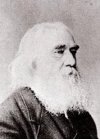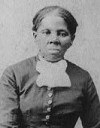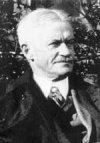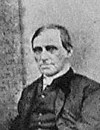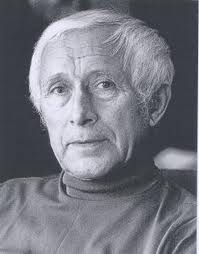The Longstanding and Forgotten Rule of Lenity
Last week a panel of the Indiana Court of Appeals decided Anthony Dye v. State of Indiana, affirming, by a vote of 2-1, Dye’s twenty-year sentence for Unlawful Possession of a Firearm by a Serious Violent Felon and the jury’s finding that he is a Habitual Offender, by virtue of which his sentence was enhanced by thirty years.
Dye was the “victim” in a case I’ve talked about a lot here on this blog, Tyrus Coleman v. State of Indiana. Dye’s conviction for Unlawful Possession of a Firearm by a Serious Violent Felon was based on the same tragic incident in 2007 on which Tyrus Coleman’s conviction for the Attempted Murder of Dye was based.
In rejecting Dye’s argument that his sentence is inappropriately harsh, the majority wrote:
The nature of Dye’s crime was not that of mere benign possession of a handgun. According to Dye, he was called by his son for assistance in a confrontation with two armed men who had previously robbed Dye at gunpoint. The result of the ensuing battle was the death of Dye’s son and Dye himself being shot twice. Had Dye simply contacted the authorities instead of seeking to address the situation himself, perhaps his son would still be alive. Moreover, the record indicates that Dye’s motives in coming to his son’s aid were not entirely noble, as the record indicates that he intended to rob at least one of the two armed men in retaliation for the earlier robbery. In light of this, it is worth noting that the facts of the incident would have, at the very least, supported a charge of attempted Class A felony robbery, for which Dye could have received a base sentence of up to fifty years of incarceration.
[Although I didn’t see the testimony at Dye’s trial, based on the testimony at Coleman’s trial this account of the incident appears slightly confused. Two men were involved in the earlier robbery, but Coleman wasn’t one of them, and only one of those two men were on Coleman’s property on the date of the incident. Furthermore, at the time of the incident on Coleman’s property only Dye, Dye’s son, and Coleman were armed.]
The Honorable Melissa May, who was born in Elkhart, Indiana (where this incident took place), dissented from the majority’s affirmation of Dye’s adjudication as an Habitual Offender, on the grounds that it was an improper double enhancement, since
Dye’s conviction of possession of a handgun by a serious violent felon (“SVF”) was premised on a 1998 conviction of attempted battery by means of a deadly weapon. His habitual offender adjudication rests on another 1998 conviction, of possession of a handgun within a thousand feet of a school, which arose out of the same incident as did the attempted battery conviction on which the SVF count was based.
Judge May believes
the majority’s result “contradict[s] the Rule of Lenity . . . and place[s] form over substance,” [citation omitted] to the extent it holds two offenses that are so related they could not be used together for an habitual offender enhancement are, at the same time, so unrelated that they may support a double enhancement in the form of an SVF count and an habitual offender enhancement.
For its part, the majority wrote:
Unless and until the Indiana Supreme Court holds that two distinct convictions arising out of the same res gestae [i.e., “things done,” meaning acts, words, and declarations that are so closely connected to the main fact or transaction as to be a part of it] cannot be used as they were here, we shall adhere to the general principle that double enhancement challenges only arise when the same conviction is used twice.
Judge May in a footnote quotes the Indiana Supreme Court to describe the Rule of Lenity: “It is a familiar principle that statutes which are criminal or penal in their nature or which are in derogation of a common-law right must be strictly construed,” and “where there is ambiguity it must be resolved against the penalty . . . .”
A logical and natural corollary of the Rule of Lenity is that constitutional and common-law rights should be liberally construed. Coincidentally, Judge May was in the majority in the Court of Appeals decision that would have freed, on Double Jeopardy grounds, Tyrus Coleman, whose use of deadly force on the tragic day in question was justified by his unalienable and statutory right to defend himself and others from what he reasonably believed to be Dye’s imminent commission of a forcible felony. Tragically, the Indiana Supreme Court didn’t see things her way.

 Follow
Follow